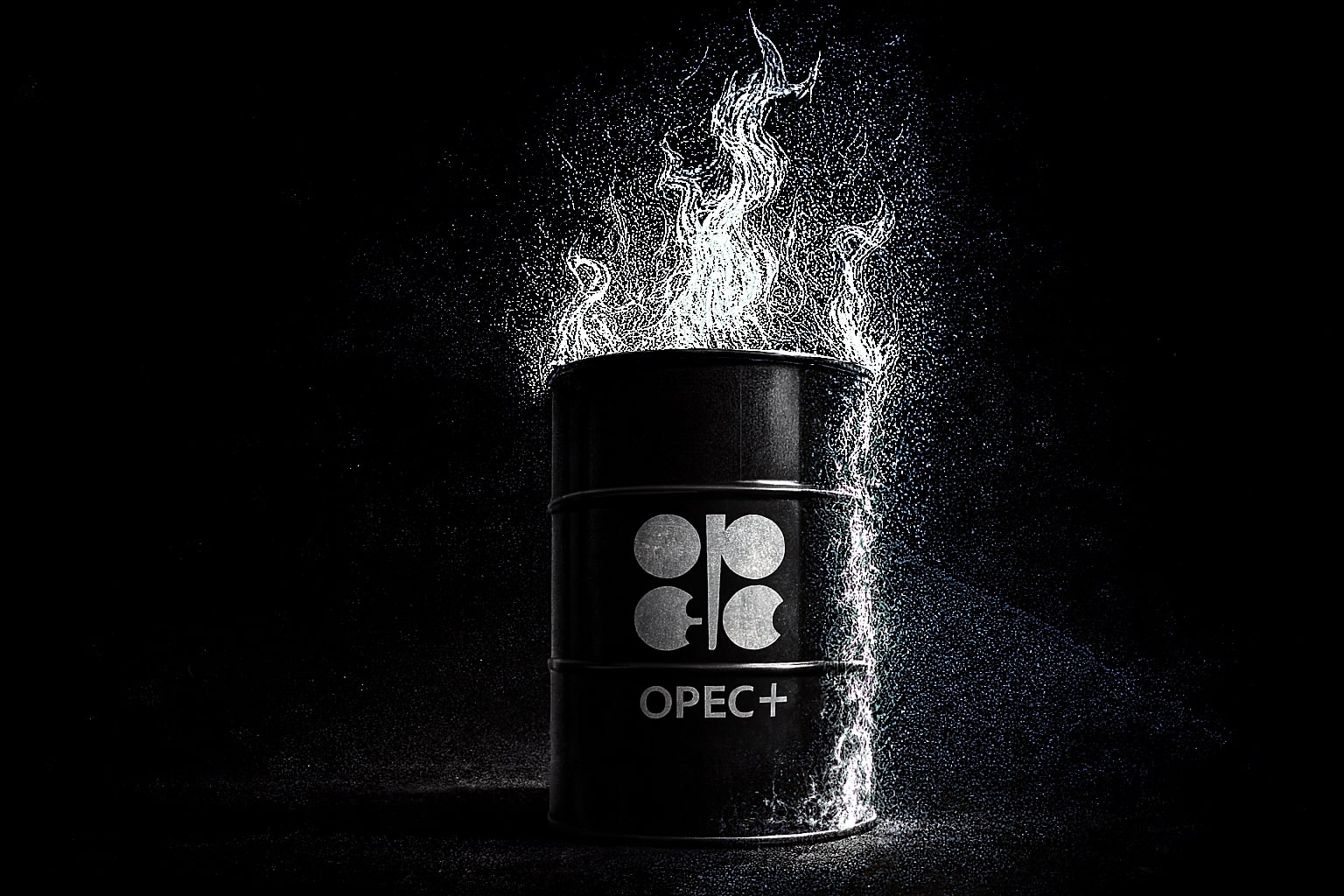
WTI and Brent Retreat as Trump’s Sanction Bluff and Tariff Shock Sink Oil Price Momentum
CL=F and BZ=F tumble as 30% trade tariffs, weak Russian sanctions, and EMA resistance fuel downside pressure; support at $65 under threat | That's TradingNEWS
WTI Crude (CL=F) and Brent (BZ=F) Face Tariff Shock, Technical Strain, and Political Uncertainty in July 2025
Oil Pulls Back as Trump Tariff Gambit and Sanctions Threats Fail to Convince Markets
Crude oil prices are extending their decline in mid-July as markets dismiss President Trump’s threat to impose 100% secondary tariffs on Russian oil exports. Despite setting a 50-day deadline for Putin to reach a peace deal in Ukraine, traders see the lack of immediate action as political theater rather than enforceable sanctions. WTI (CL=F) dropped to $66.43, down 0.85%, and Brent (BZ=F) fell to $68.73, down 0.72%, in early Tuesday trading, with both benchmarks shedding over 1.6% on Monday.
What’s driving the pullback isn’t a clear supply shift—but rather a credibility issue. Markets do not believe that Trump, who also pushed a renewed 30% tariff threat on Mexico and the EU, is willing to see prices spike just months before elections. ING analysts noted that the threat lacks teeth given the U.S. president’s desire for low fuel prices heading into November. With no immediate move to sanction Russian barrels and no supply interruption, oil traders are fading the headlines.
Technical Rejection Confirms Resistance at $70 for WTI and $71.50 for Brent
The technical outlook for CL=F remains pressured after multiple failed attempts to clear descending trendline resistance at $74–$76. The WTI price now sits below the 200-day EMA and is currently testing the key $65.50–$66.00 support zone. This level has held through multiple retests and converges with both the 50-day and 200-day EMAs. A decisive break below would expose downside risk toward $63.50 or even $60 in the near term. Brent likewise remains stuck beneath the $71.50 barrier. Failure to break above this 200-day EMA confirms persistent weakness and suggests further choppy consolidation unless momentum returns.
China’s Refinery Throughput Rebounds But Macro Drag Persists
There is support on the demand side from China, where June’s refinery throughput surged to a nearly two-year high. This seasonal recovery, aligned with summer travel demand, has been one of the few bright spots. However, the broader macroeconomic backdrop is less encouraging. Trump’s tariff spree is reigniting fears of slower trade and softer manufacturing demand, particularly in emerging markets. Analysts are beginning to price in downward revisions to Q3 global GDP forecasts, which could weigh on oil consumption outlooks through September.
Supply Steady as OPEC+ Adds Less Than Headline Numbers Suggest
Despite appearances, OPEC+ has not significantly raised output. The net increase in July remains below quotas, and compliance from swing producers like Saudi Arabia and UAE remains tight. Additionally, U.S. crude production remains capped by disciplined shale spending, with no major rig count surges recorded. But with political attention heating up ahead of the U.S. election, the risk of emergency SPR releases or price-intervention tweets cannot be ruled out.
WTI Faces Trendline Compression, Demand Fears Into August
Short-term structure on the WTI (CL=F) chart shows compression between $70 resistance and $65.50 support. A breakout above $70 would be structurally bullish, opening the path to $74 and then $78, especially if a surprise supply disruption (e.g., Middle East tensions) emerges. However, barring geopolitical shocks, rallies are likely to face aggressive selling near trendline resistance. A breakdown under $65 could invite algorithmic selling down to the $63.50 or even $60 level, which matches previous swing lows.
Brent Struggles Despite Tight Supply Optics
Brent (BZ=F) remains under pressure despite OPEC claims of $18.2 trillion in upstream investment needs by 2050. Traders are increasingly dismissing long-term supply concerns in favor of immediate macro risks. With Brent prices failing to hold above $70, and the 50-day EMA rolling over, downside momentum could persist until a firm reversal appears either from physical demand or a supply-side jolt. For now, Brent looks capped below $71.50 and supported near $68, with choppy intraday volatility.
Verdict: WTI and Brent Remain Bearish Bias Unless $70/$71.50 Are Reclaimed
The short-term bias for both WTI (CL=F) and Brent (BZ=F) remains bearish unless technical resistance levels are reclaimed decisively. Political noise from Trump’s sanctions and tariff narrative has failed to move the needle, and markets are calling the bluff. With refinery runs up in China but global demand uncertainty still clouding the picture, traders should watch for further macro data and technical confirmation. Until $70 (WTI) and $71.50 (Brent) are broken, downside risk dominates, particularly if support at $65.50 or $68 cracks. Tactical traders may consider fading rallies until trendline resistance breaks. The current structure favors caution over aggression as the oil market remains hostage to headlines and trendline traps.
Rating: Hold with Bearish Risk Bias Below $70 for WTI and $71.50 for Brent
That's TradingNEWS
Read More
-
SMH ETF: NASDAQ:SMH Hovering at $350 With AI, NVDA and CHIPS Act Fueling the Next Move
16.12.2025 · TradingNEWS ArchiveStocks
-
XRP ETFs XRPI and XRPR: Can $1B Inflows Lift XRP-USD From $1.93 Back Toward $3.66?
16.12.2025 · TradingNEWS ArchiveCrypto
-
Natural Gas Price Forecast: NG=F Falls to $3.80–$3.94 as Warm Winter Kills $5.50 Spike
16.12.2025 · TradingNEWS ArchiveCommodities
-
USD/JPY Price Forecast - USDJPY=X Slides, BoJ 0.50% Hike, Fed Cut and NFP Set the Next Big Move
16.12.2025 · TradingNEWS ArchiveForex



















